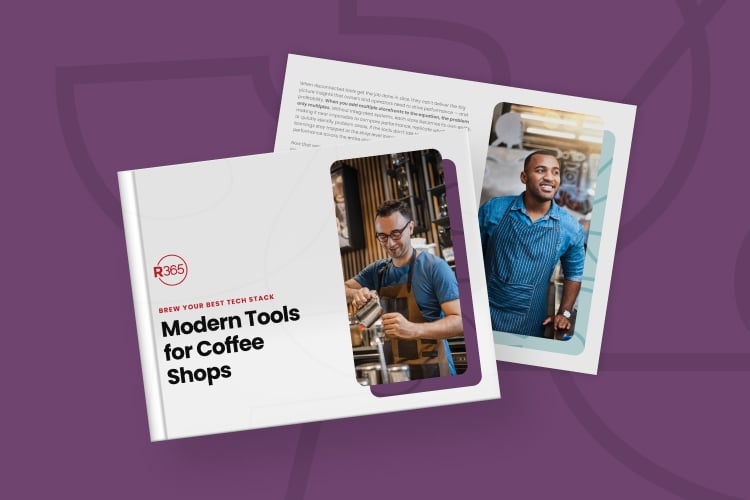Every business relies on good accounting, but it is especially true in the competitive restaurant industry.
Whether you’re a bookkeeper, accountant, restaurant owner, or store-level manager, understanding the basics of accounting can pay dividends for your business. Healthy accounting procedures for restaurants can help you manage food and labor costs, understand your profits and losses, and make strategic decisions about expenses and investments.
Here is an overview of some fundamental restaurant accounting concepts.
How is restaurant accounting different?
Restaurant accounting shares many fundamentals with other types of businesses, but some aspects set it apart. For instance, since restaurants primarily sell food and drink, inventory turns over at a very frequent rate, and sales are made up of a high number of transactions.
Between inventory, sales, and other data points like labor, restaurants generate an enormous amount of data. Keeping track of this data in your accounting is difficult, while using it to make good business decisions is an even larger challenge.
In between fluctuating food costs, labor costs, and sales levels, restaurants typically have a complex accounting system. Many restaurants are now choosing restaurant-specific accounting solutions that can speak to these specific challenges.
Successful restaurants rely on access to timely and detailed restaurant accounting data. Data helps restaurants make budgets, leverage sales forecasting, keep track of cash flow, make smart labor and inventory decisions, and more.
What specific issues do restaurants face in accounting?
Restaurant industry accounting comes with a few notable obstacles.
For example, since your restaurant places frequent orders from vendors, in addition to payroll and other costs, the business is generally cash heavy. In addition, if there are unexpected costs such as equipment repair, your restaurant needs cash reserves. Maintaining adequate cash flow is a challenge for many restaurants, making good accounting critical.
An average restaurant will work with many different vendors, from food and alcohol to paper products and cleaning solutions. Reviewing invoices for accuracy and ensuring payments are made correctly and on time presents another accounting issue.
Finally, food costs and labor costs can easily increase out of control if your restaurant is not optimizing expenses. Your restaurant must categorize food costs correctly, tracking inventory and food waste to order at the right level for sales. And because labor is one of the largest costs for a restaurant, optimizing labor costs according to fluctuating sales is key for a healthy profit margin.
Restaurant accounting cycles
Restaurant accounting cycles generally differ from many other types of businesses, primarily because revenue can vary greatly between a weekday and a weekend. Reporting by calendar month, with a differing number of weekend days in each month, can lead to numbers that aren’t comparable.
For many restaurants, using a four-week accounting period, with the same number of weekdays and weekends, provides a better year-over-year comparison of financial health. Many restaurants choose 13 accounting periods of four weeks per year (otherwise known as 4/4/5, grouping a year into four quarters, each with two 4-week months and one 5-week month).
If your restaurant operates on four-week accounting periods, consider choosing a restaurant-specific accounting platform that can speak in different accounting cycles.
Restaurant accounting basics
Now that you understand some specifics of the restaurant industry, are you ready to understand more of the nitty-gritty of restaurant accounting? Here are a few of the top terms to know if you’re not an accountant but are tasked with your restaurant’s accounting.
Chart of Accounts
Your restaurant chart of accounts organizes every transaction in your business; it is the foundation for all your financial reporting. Your restaurant chart of accounts can get granular in detail, but here are the basic categories:
- Assets: cash on hand, equipment, accounts receivable, etc.
- Expenses: food costs, bar costs, and any marketing or equipment costs
- Liabilities: costs you are obligated to pay, such as rent, payroll, taxes, and more
- Revenue: all sales for food and beverage, plus any other revenue-generating activities like events
- Equity: any shareholder equity
The chart of accounts for restaurants should be more detailed so that you have the insights you need to evaluate costs and changes over time. A chart of accounts as part of a restaurant-specific accounting system enables you to record and track food and beverage purchases in detailed accounts (e.g., seafood, chicken, beer, wine, etc.) with automated invoice coding and entry, and direct feeds of POS data. Additionally, a restaurant accounting system can consolidate your chart of accounts so that multiple locations and legal entities can be compared side by side.
Restaurant Expenses
The costs of running a restaurant can be broken into four basic categories:
- Labor cost: all expenses related to labor, including hourly wages, salaries, payroll taxes, and any employee benefits
- Cost of Goods Sold (CoGS): otherwise known as food cost, the total cost of all ingredients used in your restaurant over a certain period
- Occupancy expenses: the fixed costs of your restaurant’s location, such as rent, property insurance, and property taxes
- Operating expenses: any other expenses, including cleaning supplies, equipment repairs, and marketing
Simplifying the accounting process
Accounting may seem like a complicated task, but many technology tools can help simplify accounting procedures for restaurants and make it more efficient. Once you understand how to do restaurant accounting, even the basics, you can take advantage of modern restaurant accounting tools to help your business find financial success.
Record Daily Sales Through Your POS
Your point of sale (POS) system is a central piece of your accounting system, because you can use it to automate useful data entry. If your POS is fully integrated with your restaurant accounting software, the integration can push sales numbers to your central accounting database.
Automated POS data ensures an accurate general ledger. In addition, recording daily sales through your POS allows you to track financial transactions and cash flow, informing decisions about controlling your expenses and optimizing your profit margin.
Streamline Invoice Processing
Your restaurant probably works with multiple vendors, all of whom send different invoices at different times. From reviewing invoices for accuracy to keeping track of payment due dates, it can be difficult to stay on top of invoice processing.
The more you can leverage restaurant accounting software to streamline the accounts payable (AP) invoice process, the better. AP automation allows vendors to submit digital invoices (or restaurant managers and accountants to upload invoices) directly into a centralized system. With all invoices on one platform, you can set up an approval workflow and custom accounting records.
AP automation can eliminate manual data entry, helping ensure inventory and invoice data is more accurate. And with a more streamlined system, your team can stay on top of invoices and run the business more efficiently.
Integrate Bank Information to Streamline Reconciliation
Finally, although end-of-month manual bank reconciliation used to take days, modern restaurant accounting software can save time by automating much of the process. By directly connecting your accounting software to your bank, your restaurant can perform bank reconciliation daily and create time-saving rules to match bank activity.
Understanding your P&L and other financial statements
Your Profit and Loss (P&L) statement is one of the cornerstone pieces of your restaurant finances. The P&L statement summarizes your revenue and expenses for a certain period, showing your business profitability. It is a high-level review of the financial health of your restaurant, and it should inform the decisions you make about cost optimization or business strategy.
If there’s one financial statement you should be reviewing frequently, even daily, it should be your P&L. The more often you review financial statements, the more proactively you can address any issues. The P&L provides up-to-date numbers that you can use to adjust in areas like your labor costs, food costs, or sales promotions.
Analyzing the financial health of your restaurant business
Understanding your restaurant accounting data allows you to analyze the financial health of the business. Here are a few key areas to focus on:
Net Profit
Your net profit is based on your net income (your total revenue, minus operating expenses like CoGS, labor costs, taxes, and rent). Divide your net income by total sales to calculate your net profit margin. This number percentage represents how much of every dollar you bring in goes to net profit.
Prime Cost
Your prime cost covers your two largest expenses, CoGS and labor. As opposed to fixed costs like your rent or utilities. Your restaurant has some influence and control over food and labor costs, making these expenses critical to track and understand.
Cost-to-Sales Ratio
When looking at your restaurant’s financial health, it isn’t enough to just look at sales numbers by themselves. To understand the context of sales, it is helpful to look at your sales in comparison to your costs, through your cost-to-sales ratio. You can use this formula:
Prime Cost Ratio = Prime Cost / Total Sales
In general, the prime cost-to-sales ratio for many restaurants runs approximately 60% of sales. This may differ between quick service restaurants and full-service restaurants, so it is most beneficial to just compare your own numbers over time.
Conclusion
Being successful in restaurant accounting, even for non-accountants, requires a basic familiarity with accounting concepts like the ones above. While it may seem like a different language at first, understanding accounting can drive good decision making and ultimately add to your restaurant’s bottom line.
If you would like to easily track data and gain insight into your accounting to increase efficiency and boost profits, consider a comprehensive, restaurant-specific management solution. Restaurant365 is an all-in-one restaurant management system incorporating restaurant accounting software, restaurant operations software, inventory management software, payroll + HR software, and scheduling software into a cloud-based platform that’s fully integrated with your POS system, as well as to your food and beverage vendors, and bank.



